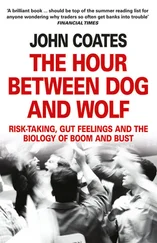Paul and I had put forth a monstrous effort that showed new depths to my strength; these came to bear the next weekend, when I returned with my friend Judson Cole from Arizona and we climbed the regular Disappointment Cleaver route in a single push, going from the Paradise base area to the summit and back in fourteen hours. On an endurance-climbing kick, I joined a group of three companions from the ACME Mountain Club for an ascent of the North Face of Mount Shuksan, one of the most beautiful mountains in the world and still one of the greatest climbs I’ve ever done. But the approach to the climb was proof of the adage “If you want to get to heaven, you have to go through hell.” Our team bushwhacked through such heavy forest undergrowth that it ripped one of my ice tools completely off my backpack without my even noticing. I lost our only map as well, as I slipped with every second step on the sloping hillside coated in two-inch-thick slide alder branches. Thankfully, we knew the route well enough from having memorized the description that we were able to keep going, despite gaining only a mile’s progress in almost eight hours of hiking through the night.
By morning we were exhausted from the heinous approach. After reorienting ourselves in the daylight, we reached 5,000 feet on the north shoulder of the mountain and collapsed for an hour-long nap. At noon, we rousted ourselves and roped up for protection against falling into a crevasse while we climbed the mountain’s upper glaciers. A thousand feet up, in the middle of the ramp connecting the two glaciers of the North Face, as my rope-mate Bruce and I were spread across an avalanche debris field, we heard a distant rumbling far above us.
Our partners ahead started screaming at us to run. Without looking at what the other was doing, Bruce and I ran three steps away from each other, and the rope drew taught, comically jerking us to a halt. It was a moment that we recounted later in bellyaching guffaws, but it brought me to the brink of a roiling panic at the time. I turned back toward Bruce. “THIS WAY!” I yelled over the increasing but still invisible thunder, and gave a rough tug on the rope.
We both sprinted forward across the snowfield in a blinding terror. With heavy mountain boots, crampons, and forty-five-pound packs, moving quickly proved to be a nightmare. Time slowed; it felt like we were running in place. Suddenly, the noise got louder and then stopped, as though I’d stepped into a soundproof room. I shot a look back over my shoulder.
From an ice cliff hanging above and halfway across the traverse, a boulder the size and shape of a motor coach hurtled into the air, spinning and wobbling violently like a punted football. The sight brought me to a horrified stop as I screamed for Bruce. “RUN! KEEP RUNNING!” I couldn’t tell if he was clear of the boulder’s landing zone yet, and we had only about two more seconds before we both found out the hard way.
In those last elongated seconds, Bruce didn’t even look up-he just sprinted harder toward me. I grabbed the rope, whipped it downhill, and pulled it in as he ran, trying to keep it from tangling in his crampons. A brilliant fury of adrenaline contorted Bruce’s face as the gargantuan boulder ended its meteoric flight in a mammoth explosion of snow fifty yards uphill and-thank the heavens-forty yards behind Bruce. With its momentum only partially absorbed, the boulder slid across our tracks like a derailed train car, accelerating until it careered over the edge of the crevasse lip at near-highway speed.
The sound died away. None of us could believe how quickly the whole sequence had played out. Bruce didn’t see the boulder at all; he was still running when it dove off the glacier. We were safe from the near-miss and regrouped in a cyclone of backslapping.
“You sure nobody needs to change underwear?” one of the other guys jested. We had been shaken and wanted to rest, but we were each equally determined to keep going and make our high camp before we ran out of afternoon light.
After they had led for three hundred vertical feet, the other rope team turned over this more difficult work to Bruce and me. Still recovering from his emotional expenditure, Bruce wasn’t up for kicking steps, hammering in snow pickets, and carrying the psychological burden of being in front. I collected the pickets, borrowed an ice hammer to temporarily replace my lost second tool, and set off from the others, who would follow once I was a rope length above them. Stabbing the front points of my crampons into the stable late-summer snowpack, I held my ice tools like daggers, with my fists wrapped high around the handles.
I fell into a cycle of motion, first plunging my right axe into the crust above my shoulder, then kicking my right foot through the crust and compressing a step. As I stood on my right foot, the sequence continued on my other side. When I started, I had nearly two thousand feet of virgin white mountainside rising steeply above me. Without landmarks, the unbroken field slipped by indeterminately. Even the horizon of the glacier’s upper slopes rolling back out of sight above me seemed fixed at an unapproachable distance. My one indication of progress was the occasional shout from Bruce that let me know we’d climbed another rope length, and it was time to pound in another picket. At his signal, in a smooth series of motions, I would draw a two-foot-long T-section metal post from my pack’s quiver, hold it against the slope, and strike it with the hammer on the back of my right ice tool until it was nearly buried. Clipping the rope through the adjoining carabiner protected Bruce and me against a fall. Our second team used the same pickets, then removed them as the last man passed each snow stake.
To my left, the slope swept down to the same hanging ice cliff where we had watched the boulder perform its airborne display. I drew myself inward, focusing my mind on efficiently regulating my body’s motions. My climbing patterns took on an unbreakable rhythm, plunging an axe, kicking twice with my foot, switching sides, plunge, kick, kick, plunge, kick, kick. It was a waltz that I danced with the mountain for an enchanted hour.
As the sun dropped into a thin cloudbank forty miles out over Puget Sound, light refracted in the prism of ocean vapors, and Mount Shuksan put on her finest evening gown. I glanced over my right shoulder to watch the lights of Victoria illuminate the coastline of Vancouver Island. As the sunset spilled claret wine over the jagged Picket Range and the border peaks of the North Cascades, I found it harder and harder to lean in on my axes, until finally, I stood up and walked ten yards without kicking steps. I was at the top of the glacier, close to 9,000 feet above sea level. Staring ahead, I admired the black pyramid of Mount Shuksan’s symmetrical summit jutting up from the surrounding snowfields. As the rope allowed, I walked over to a convex roll in the white plateau that commanded views of Mount Baker, Puget Sound, the North Cascades, and southern British Columbia, and made an executive decision that this would be our campsite for the night. If the afternoon’s exquisite climbing had been a reward for the torture of the previous night’s bushwhacking, then the tranquil splendor of this campsite was due return for the boulder’s terror. My run-down teammates arrived one by one with compliments for my step-kicking and campsite selection, and we went to work making ready for dinner and rest.
Our adventure on Mount Shuksan wasn’t over. Since we hadn’t yet topped out on the mountain-and indeed were on the opposite side of the summit pyramid from the fastest route to the top-we had a long day ahead of us when Sunday dawned bright and clear. Circumventing the black pyramid’s ramparts on the east and then the south, we were forced to skip going up the final five hundred feet to the peak’s high point so we could scout the three major gullies that dropped off the west side of the mountain’s southern glacier. Without the map, we had little certainty of our descent, and though we found our way down the steepest climbing of the trip-through an ice tunnel at a glacial bergschrund (a crevasse created where the head of a glacier pulls away from the adjacent rock), down the vertical rock of the Fisher Chimney, and up a grueling finish to reach the Mount Baker ski area-it was dark again before we were off the mountain.
Читать дальше












